Hubei, abbreviated as “E,” lies in central China, right in the middle stretch of the Yangtze River. It’s not only a vital hub for China’s economy, culture, and transportation, but also a historical region with rich heritage. The capital city, Wuhan, is often called the “Thoroughfare of Nine Provinces” due to its strategic location. Other popular cities like Yichang, Xiangyang, Jingzhou, and Enshi also offer incredible natural and cultural experiences.
The province features a diverse terrain including plains, hills, and mountains. The Yangtze River flows across its heart, giving rise to ancient civilizations. With a blend of modern cities, scenic mountains, grand rivers, and deep cultural roots, Hubei is an outstanding travel destination in China.
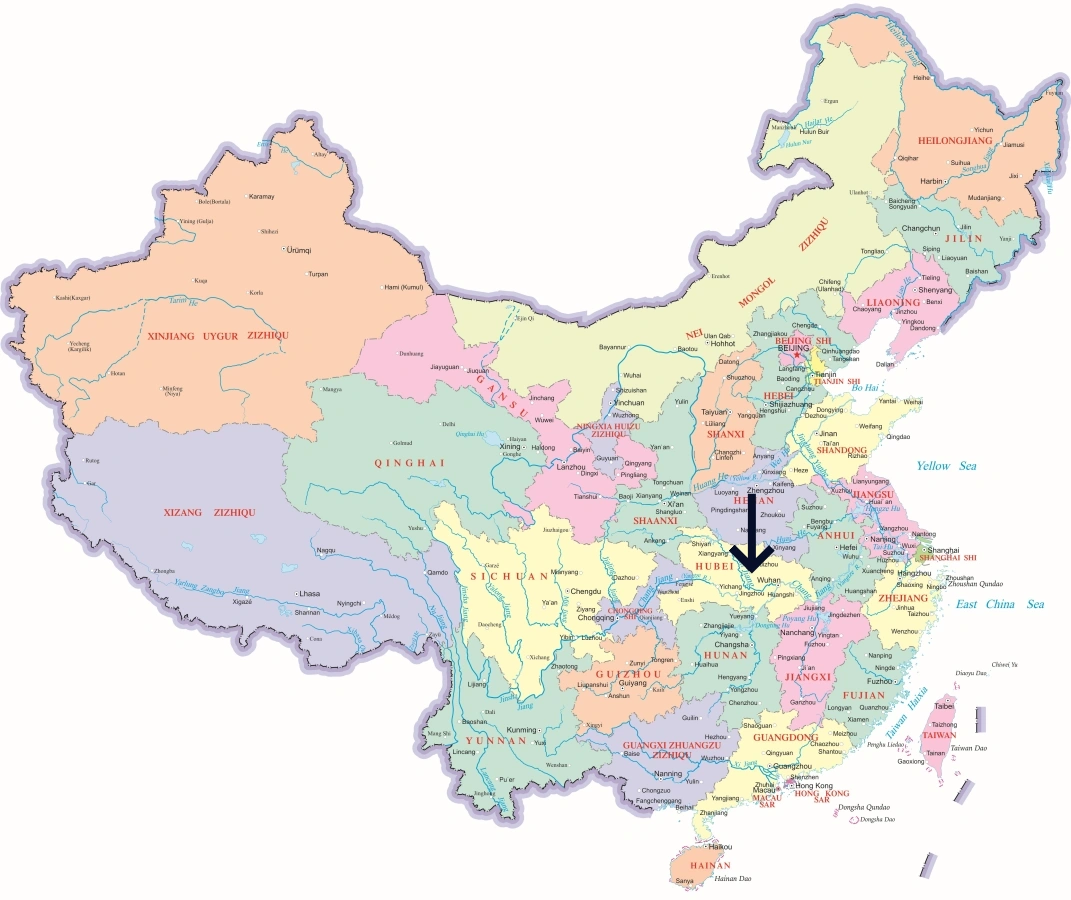
Hubei is made up of 13 prefecture-level cities and one autonomous prefecture. Each area has its own unique charm, offering travelers a wide range of experiences—from mountain adventures to ancient city explorations, from ethnic minority culture to vibrant local food scenes.
Wuhan is the most visited city, but places like Yichang, Xiangyang, Jingzhou, and Enshi have their own strong appeal. Cities such as Huangshi, Shiyan, Ezhou, Huanggang, Xiaogan, Xianning, Suizhou, Xiantao, Tianmen, Qianjiang, and the Shennongjia Forest District are also worth exploring.
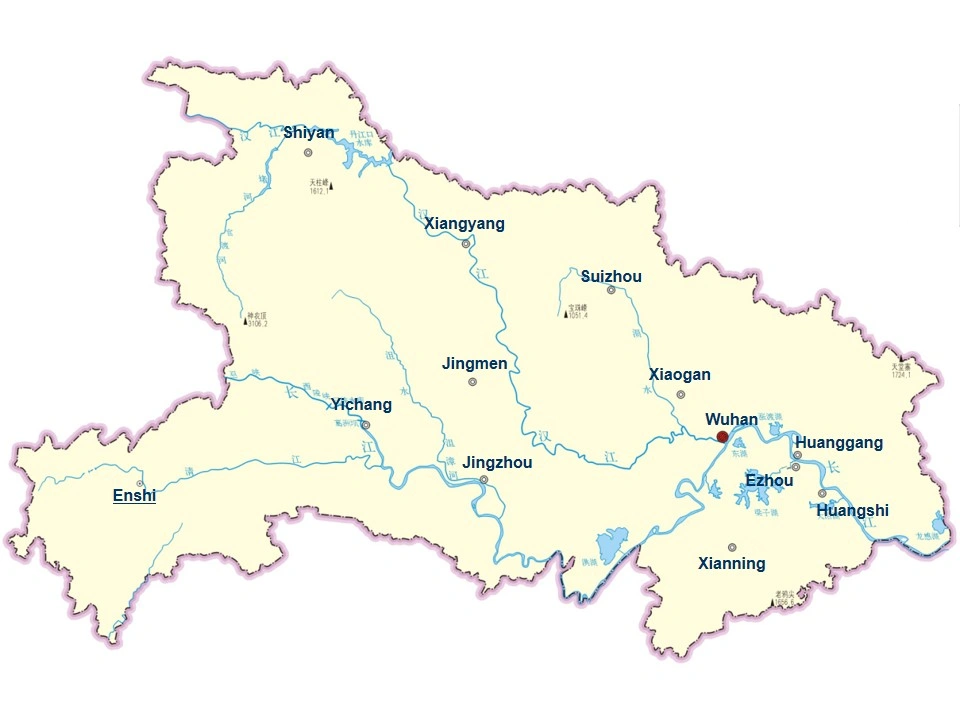
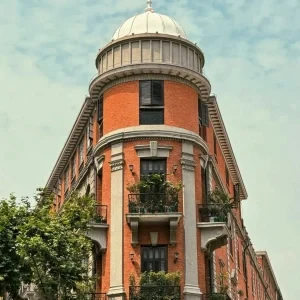
The capital of Hubei and a major transportation hub in central China. Highlights include the Yellow Crane Tower, Wuhan University’s cherry blossoms, East Lake, and the scenic Yangtze River waterfront.
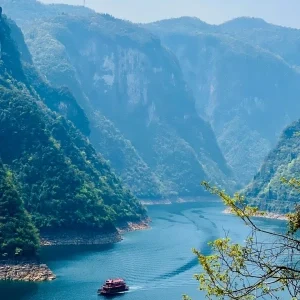
Known as the gateway to the Three Gorges, Yichang is home to stunning sights like the Three Gorges Dam and Xiling Gorge. It’s a place where engineering marvels meet natural wonders.
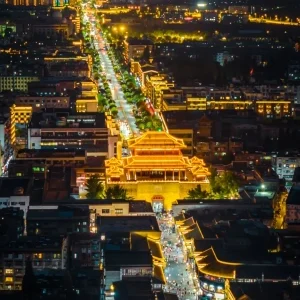
This ancient city played a key role in the Three Kingdoms era. Tourists come for the well-preserved Xiangyang Ancient City and the legendary Zhuge Liang's former residence, Gulongzhong.
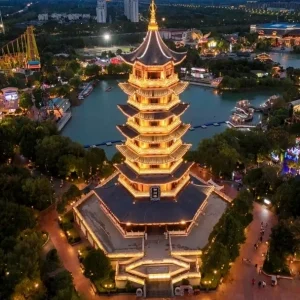
A city steeped in history and culture. Visit the Jingzhou Ancient City Wall and the Guan Yu Shrine to feel the pulse of the Three Kingdoms era.
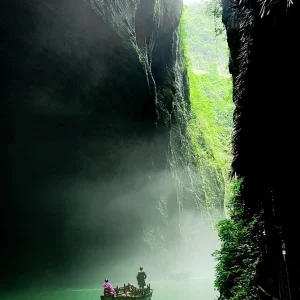
Located in the Wuling Mountain region, Enshi Tujia and Miao Autonomous Prefecture is famous for its natural beauty and ethnic heritage. Don’t miss Enshi Grand Canyon, Tenglong Cave, and the charming Daughter’s Town.
Hubei is a great place to explore both natural landscapes and cultural relics. Whether you’re into historical landmarks, dramatic mountains, or ancient architecture, this province offers diverse attractions for different types of travelers.
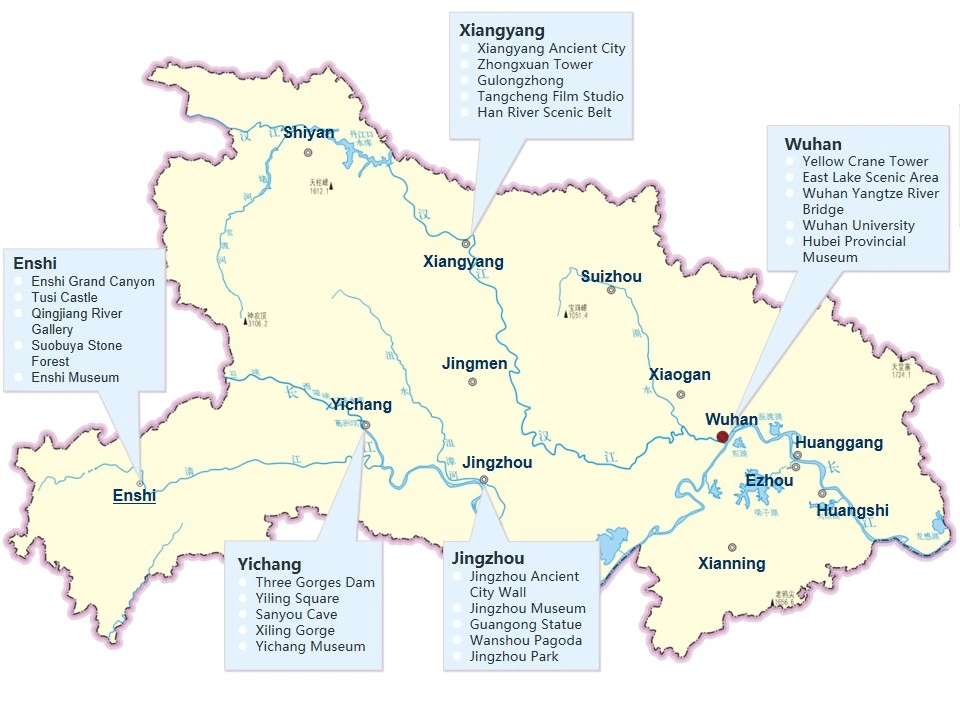
-300x300.webp)
One of China’s Four Great Towers, this iconic structure offers panoramic views of the Yangtze River. It's been celebrated in classical Chinese poetry for centuries.
-300x300.webp)
The world’s largest hydroelectric project. Visitors can witness the power of human engineering and enjoy sweeping views of the Yangtze River basin.
-300x300.webp)
Often dubbed “China’s Colorado,” this geological wonder features cliffs, rivers, and sea of clouds. Ideal for nature lovers and adventure seekers.
-300x300.webp)
The largest city lake in China. Perfect for cycling, flower viewing, and lakeside picnics, especially in spring and autumn.
-300x300.webp)
One of China’s most complete ancient military cities. At night, the walls light up beautifully, making for a stunning cultural experience.
-300x300.webp)
One of China’s largest karst caves. Inside, you'll find underground rivers, dramatic stalactites, and even live cultural performances.
Hubei cuisine, or “E Cuisine,” is known for its bold, savory flavors and variety. The province’s food scene is influenced by Sichuan and Hunan cooking, but also includes many local street dishes and homestyle favorites. Wuhan especially shines in breakfast culture, while Yichang specializes in freshwater fish, and Jingzhou and Xiangyang offer classic Chu-style meals.
-300x300.webp)
A Wuhan breakfast staple. Noodles are tossed with sesame paste, scallions, and chili oil for a chewy, flavorful start to the day.
-300x300.webp)
A crispy tofu-skin wrap filled with glutinous rice, minced meat, and mushrooms. Crunchy outside, sticky inside.
-300x300.webp)
Steamed or braised fish caught from the clean Qingjiang River. The meat is tender and fresh.
-300x300.webp)
A traditional Tujia dish. Smoked meat meets crisp, wild vegetables in a simple but aromatic stir-fry.
-300x300.webp)
A winter favorite in Hubei homes. The soup is slow-cooked, fragrant, and soothing—especially during cold weather.
-300x300.webp)
Rich broth, tender beef, and chewy noodles make this dish a local comfort food.
Hubei covers around 185,900 square kilometers and has a population of about 58 million people. Below are area and population details by city (based on 2023 statistics):
Note: These figures refer to permanent residents and may vary slightly over time.
Hubei experiences a humid subtropical monsoon climate with four distinct seasons. Summers can be hot and humid, while winters are typically cold and damp. Here’s what to expect each month (based on Wuhan and Yichang weather):
Best travel times: Spring (March–May) and Autumn (September–November)
Here’s a list of major cities in Hubei along with their postal codes and telephone area codes:

 English (US)
English (US)